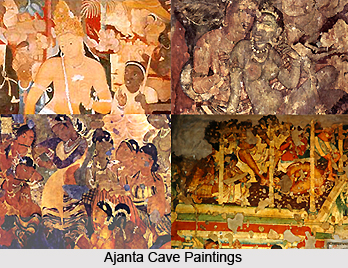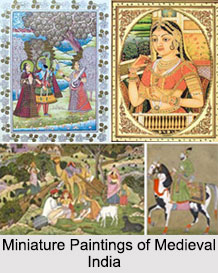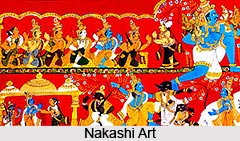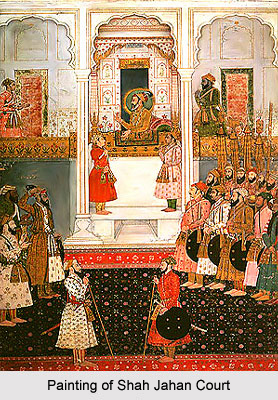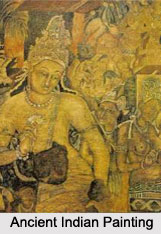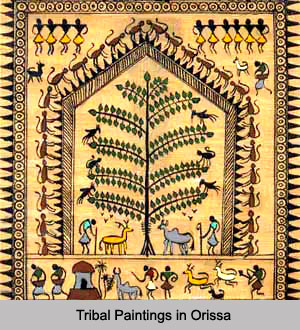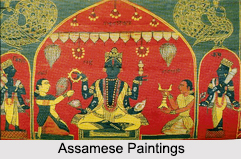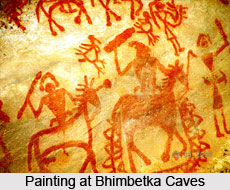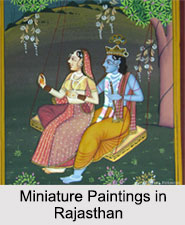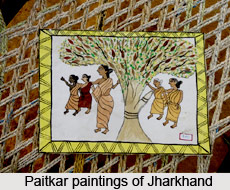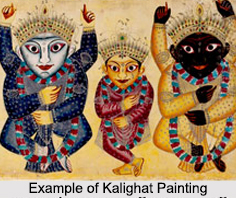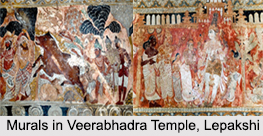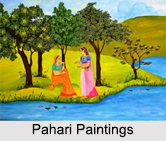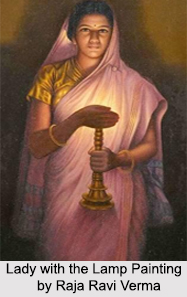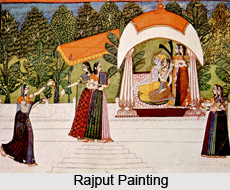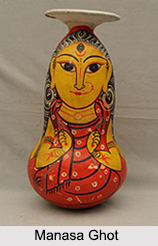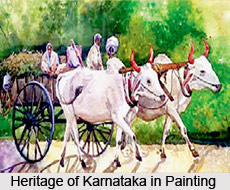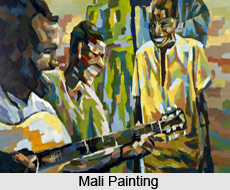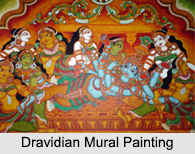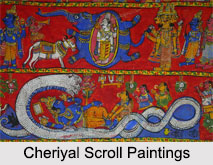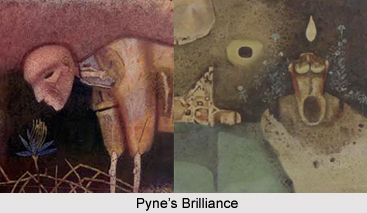 Contribution of Ganesh Pyne to the domain of International art bears the testimony of unadulterated progeny of what Rabindranath Tagore and his successors like Abanindranath Tagore and Gaganendranath Tagore had mastered and introduced as well as laid bricks upon the hollow walls of what one confirms as `famous`. The reclusive Ganesh Pyne, one of the greatest of contemporary Indian art held a contemplative mirror to the turbulent times and the times that his life fixed in created reality. As a result the microcosm and macrocosm: the outer and inner life twigged their fans within the Urn of his crepuscular paintings.
Contribution of Ganesh Pyne to the domain of International art bears the testimony of unadulterated progeny of what Rabindranath Tagore and his successors like Abanindranath Tagore and Gaganendranath Tagore had mastered and introduced as well as laid bricks upon the hollow walls of what one confirms as `famous`. The reclusive Ganesh Pyne, one of the greatest of contemporary Indian art held a contemplative mirror to the turbulent times and the times that his life fixed in created reality. As a result the microcosm and macrocosm: the outer and inner life twigged their fans within the Urn of his crepuscular paintings.
Contribution of the Environment in Works of Ganesh Pyne
His birth canvas unfurled all by itself with Pyne born in 1937 and the canvas drew sordid tales as scratches were noted with his father`s death in childhood. He joined the Government College of Art & Craft in 1955 after an uncle was impressed with his ability to draw. Abanindranath`s paintings had always intrigued him and Pyne got to know him and other Bengal masters in art school. Here he, for the first time, encountered Rembrandt and at a later date discovered Paul Klee. Paradox itself became a watchword as his hauntingly beautiful paintings that opened charmed magic casements harked and retreated to the stiflingly dark and cramped rooms of the century-old house in central Kolkata where he grew up.
 Childhood always marks the contours of making of a great artist. Pyne faced the similar fate. The bedtime stories that his grandmother narrated him playfully, the lullabies that she sang and the oleographs and the image of Chaitanya that he saw in a neighbouring shrine all affected his plaintative moods as rains water the thirsty valleys and he sucked them which later surfaced in his inimitable paintings. The end result had been the creation of temperas totemic of voracious poetic aura as the images of death and decay are juxtaposed with those of the enchantment and richness of life. The ghosts were dug up the past that one erases from one`s memories a part of growing up.
Childhood always marks the contours of making of a great artist. Pyne faced the similar fate. The bedtime stories that his grandmother narrated him playfully, the lullabies that she sang and the oleographs and the image of Chaitanya that he saw in a neighbouring shrine all affected his plaintative moods as rains water the thirsty valleys and he sucked them which later surfaced in his inimitable paintings. The end result had been the creation of temperas totemic of voracious poetic aura as the images of death and decay are juxtaposed with those of the enchantment and richness of life. The ghosts were dug up the past that one erases from one`s memories a part of growing up.
But childhood was no state of innocence. He had said in an interview: "The visual experience of my art is an extension of the colours and forms absorbed in childhood." Ganesh Pyne was a recluse who shunned the media, avoided the opening of his own exhibitions and withheld his paintings from international auction houses like Sotheby`s and Christie`s. He was also impossibly arrogant and the similar strains manifested in his art.
He was greatly affected by a Shakti Chattopadhyay and his recitation in the 1960s of a poem that spoke of roaring and turbulent waters, a corpse and the lawless wind. Pyne created its visual equivalent in a celebrated painting. His mind was like a melting pot: diverse myths, stories and influences took an independent shape here. These human factors summed up to what finally marked the making of Pyne.
His Uniqueness figured the territory of his contribution
None attempted to roll in a suspension of disbelief regarding the contemporaneity of his painstakingly attempted temperas where he offered himself the role play of a magician conjuring up archetypal figures as the boatman of Lethe, the fanged and snarling beast, isolated and crumbling pieces of architecture inundated in baleful moonlight, the assassin, and the conjurer drawn, as it were, from ones collective consciousness, and his self-portraits in which he depicted himself as a monkey, a clown and an ambivalent, Medusa-like mask in a snaky turban.
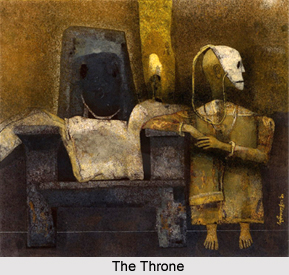 In 1968, he chose to work in the medium of tempera, which has now become synonymous with Pyne`s work. His paintings began to reflect the inner workings of his mind and he would revert to his childhood to dredge up images that lay concealed in his subconscious. Known for penetrating vision, he was the pole star amidst the leafy sky of art that may be deciphered as timeless. Pyne painted dream worlds, a world that "is only half articulate and leaves the rest to a strange eloquent silence." Using images from his childhood, religious iconography and the stories of the Bengali epics, he created an oeuvre that was deeply private, resonant with myth and full of complexity.
In 1968, he chose to work in the medium of tempera, which has now become synonymous with Pyne`s work. His paintings began to reflect the inner workings of his mind and he would revert to his childhood to dredge up images that lay concealed in his subconscious. Known for penetrating vision, he was the pole star amidst the leafy sky of art that may be deciphered as timeless. Pyne painted dream worlds, a world that "is only half articulate and leaves the rest to a strange eloquent silence." Using images from his childhood, religious iconography and the stories of the Bengali epics, he created an oeuvre that was deeply private, resonant with myth and full of complexity.
In the next work, Pyne recalls being spellbound by the beauty of a small temple that stood in front of his ancestral home in Kaviraj Row. The destruction of the icon may have had inspired this work. The entrance way of the shrine affords a view of a sombre space allowing the viewer to imagine the next narrative. Pyne creates a visual world where imagination is encouraged. . The epic narrative describes in vivid and graphic terms a civilisation on the brink of destruction as the Pandavas and Kauravas clashed in Kurukshetra.
Originality of Pyne as an ingredient of his contribution
Though Aristotle vociferously pronounced that art is imitation, the twice placed reality and originality is a far cry in the sea of art; yet the great body of work that Pyne has left behind portrays his unhampered originality. Pyne hardly churned out images but worked on each with the meticulousness of skilled jeweller. His palette was quiet. Ambers, blues, greens and warm reds sing in a low key, suffusing the atmosphere with melancholy. His paintings glowed with the light of lamps and led viewers into a fantasy land of terrifying beauty. Flowers bloom in a ribcage. Spring like a luscious maiden entices a skeletal ascetic. A queen converses with a mythical bird: half-man, half-bird. The twilight haze crackles with sinister eroticism.
Ganesh Pyne`s paintings always revealed a sinister, twilight world that offered a few certainties, where nothing was ever defined in unequivocally black and white terms. Indeed to look at a Pyne painting was to look at a world of moral ambivalence. In his last show Mahabharata which was considered epic and narrative driven, it seemed as if death smirked even as it rose in its triumphant victory over the crass carcass of life.
Later experiences were "scanned" in this light and assimilated. Nimble-minded, he reinvented myths and made viewers "more aware of the deeper, unnamed feeling which form the substratum of our being, to which we rarely penetrate", to quote T.S. Eliot. Pyne suffered great privations in those early years as an artist. He painted ceaselessly. In retrospect, he felt that hardship and toil contribute to the growth of any artistic sensibility. Where others would have given up in despair, he went back to painting every evening for consolation. For him Art was both for Arts sake as well as what Bernard Shaw propagandized: art portraying the tumultuous demons as per the demands of time.
With his physical decay, the art world has lost one of its great luminaries; his passing away being a milestone in the language of contemporary figuration. Apocalyptic dawn clouds the maroons of mood even as painting looses it `P` for Pyne.
